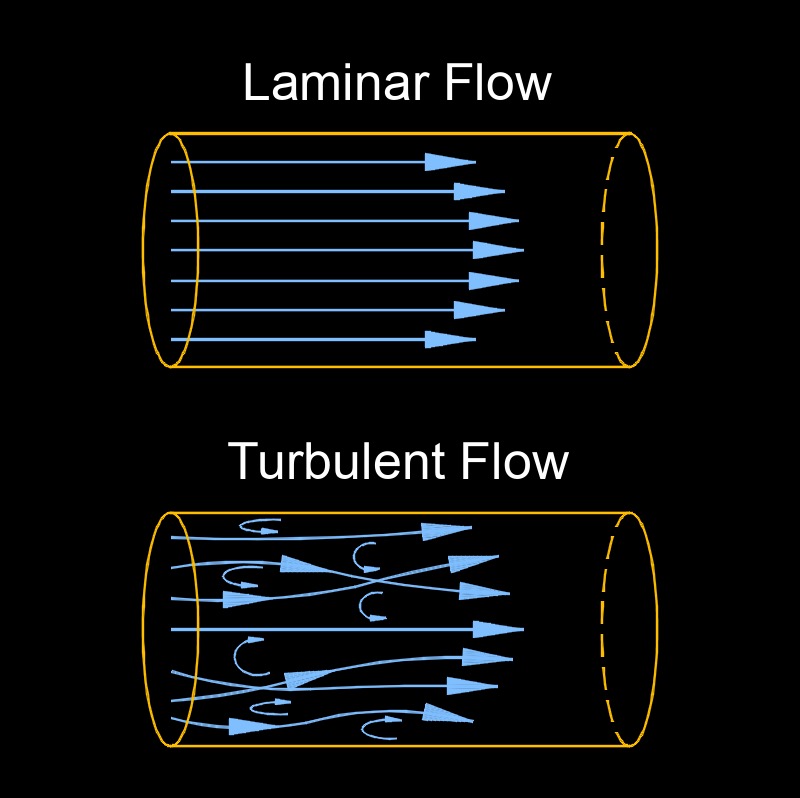Reynolds Number Formula |
||
|
\( Re \;=\; \dfrac{\rho \cdot v \cdot l_c }{ \mu } \) (Reynolds Number) \( \rho \;=\; \dfrac{Re \cdot \mu }{ v \cdot l_c} \) \( v \;=\; \dfrac{Re \cdot \mu }{ \rho \cdot l_c } \) \( l_c \;=\; \dfrac{ Re \cdot \mu }{ \rho \cdot v } \) \( \mu \;=\; \dfrac {\rho \cdot v \cdot l_c }{ Re } \) |
||
| Symbol | English | Metric |
| \( Re \) = Reynolds Number | \( dimensionless \) | \( dimensionless \) |
| \( \rho \) (Greek symbol rho) = Fluid Density | \( lbm \;/\; ft^3 \) | \( kg \;/\; m^3 \) |
| \( v \) = Fluid Velocity | \( ft \;/\; sec \) | \( m \;/\; s \) |
| \( l_c \) = Characteristic Length or Diameter of Fluid Flow | \( in \) | \( mm \) |
| \( \mu \) (Greek symbol mu) = Fluid Dynamic Viscosity | \( lbf-sec \;/\; ft^2\) | \( Pa-s \) |

Reynolds number, abbreviated as Re, a dimensionless number, measures the ratio of inertial forces (forces that remain at rest or in uniform motion) to viscosity forces in the fluid flow (the resistance to flow). It is used to predict the flow regimes of a fluid or gas.
Reynolds Number Interpretation
-
Low Reynolds Number (Re < 2000) - Laminar flow dominates. The fluid moves in smooth, orderly layers with minimal mixing. Viscous forces are more significant, keeping the flow stable. Think of honey flowing slowly.
- Reynolds Number (2000 < Re < 4000) - The flow is in a gray area, it might switch between laminar and turbulent depending on conditions like surface roughness or disturbances. This is less predictable.
-
High Reynolds Number (Re > 4000) - Turbulent flow takes over. Inertial forces dominate, leading to chaotic, swirling motion with eddies and mixing. Picture fast-moving water in a river.
It's important to note that these Reynolds number ranges are general guidelines, and the transition from laminar to turbulent flow can be influenced by factors such as surface roughness, disturbances, and the specific geometry of the flow.
